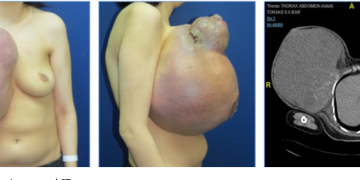The Prevalence and Causative Bacteria of Spontaneous Bacterial Peritonitis in Patients with Ascites Due to Liver Cirrhosis
Mostafa M. Ragheb* Hassan Nasr El Eslam Mohamed**, Hamdy A. Selim***, Ahmed M. Ragheb, Fadia M Attia****, Adel A Hassan* and Ahmed G. Salem*.
Faculty of Medicine, Suez Canal University, departments of * Endemic and Infectious Diseases, **Microbiology and Immunology and ***Internal Medicine and ****Clinical Pathology.
Faculty of Medicine, Al Azhar University, department of Clinical Pathology.
Abstract
Introduction: Spontaneous bacterial peritonitis (SBP) is a common and severe complication in cirrhotic patients with ascites. It occurs in 10-30% of patients admitted to hospitals causing high mortality. Aim of Work: This descriptive cross–sectional study aimed to determine the prevalence of SBP, the causative organisms and their antibiotic sensitivity. Subjects and Methods: The study included 198 patients with cirrhotic ascites admitted to Suez Canal University Hospital (SCUH) from May to December 2006. All were subjected to clinical assessment and imaging by abdominal ultrasound. Ascitic fluid (AF) examination included cell count, total proteins, culture and antibiotic sensitivity. SBP was diagnosed when the number of polymorphonuclear cells was >250/cmm in AF. Results: SBP was diagnosed in 20.4% (40 patients). Cultures were positive in 23 (11.6%) patients and revealed gram negative bacilli in 16 patients (69.9%) and gram positive cocci was isolated in 30.1% (7 patients). Escherichia coli were found in 52.2%, Streptococci (17.4%), Staphylococci (13%) and Klebsiella (13%) and Citrobacter (4.3%). All gram positive bacteria were sensitive to amoxicillin–clavulanic acid, levofloxacin and ampicillin–sulbactam compared to 85.7% sensitivity for cefotaxime, ceftriaxone and ofloxacin and 61.4% sensitivity for ciprofloxacin. For gram negative bacteria, the sensitivity was 100% for cefotaxime, 87.5% for ampicillin–sulbactam and 93.8% for the other antibiotics. SBP was significantly associated with higher pulse rate (89.8±6.2/min) and body temperature (37.8±0.6 ºC), spider nevi (60%), abdominal tenderness (77.5%), higher mean of total leukocytic count in peripheral blood (7,700±6,200/cmm), lower mean of serum total proteins and albumen (5.7±0.8 and 2.1±0.3 gram/dl respectively), prolonged prothrombin time (80%) and higher Child score (12.6±1.5). In the ascitic fluid, SBP was also significantly associated with significantly higher total leukocytic count (2987.5±5012.7) and lower mean total proteins (1.0±0.2gm/dl). Multivariate analysis revealed that high Child Pugh score and AF total protein levels of <1gm/dl were significantly associated with SBP.
Conclusions: The prevalence of SBP in SCUH is high (20.4%) in patients with cirrhotic ascites. SBP should be suspected in patients with high Child Pugh score and when ascitic fluid total protein level is low (<1gm/dl).
Introduction:
Spontaneous bacterial peritonitis (SBP) is a spontaneous infection of the ascitic fluid in absence of any infection or perforation of intra-abdominal organs (Rimola and Navas, 1999). This potentially life threatening complication occurs 10-20% of ascitic patients with liver cirrhosis causing a mortality in 33.3% to 53.8% compared to 8.5 to 31.9% in patients without SBP (Rimola, et al., 2000 and Figueiredo, et al., 1999). Furthermore, SBP recurred in 69% after one year (Sherlock and Dooley, 2002). And is complicated by hepatorenal syndrome in 30 % of patients (Moore and Dagher, 2001).
Most of the organisms causing SBP are derived from the intestinal microbial flora; mainly enterobacteriaceae (Gaurner and Soriano, 1997). Traditionally, 3/4th of SBP infections are caused by aerobic gram-negative organisms (E. coli in 50%), and 1/4th due to aerobic gram–positive organisms (Streptococci in 19%). However during the recent years, the incidence of SBP caused by gram-positive bacteria is increasing (Cholongitas et al., 2005). The diagnosis of SBP is made when the polymorphonuclear leukocyte count in ascitic fluid is greater than 250 cells per cubic millimeter (Rimola, et al., 2000). With the addition of ascitic fluid culture, ascites could be classified as culture positive or culture negative neutrocytic ascites (Figueiredo, et al., 1999). In clinical practice, culture results are usually delayed for several days and about 2/3rd of cases with SBP are culture negative, antibiotic therapy should be started whenever the polymorphonuclear (PMN)
...............more in pubmed.com
Apply for China Government Scholarships for International Students
CHINESE GOVERNMENT SCHOLARSHIP PROGRAMS for 2017-2018 for International Students in China will always announce the notice for enrollment on its office...








Discussion about this post